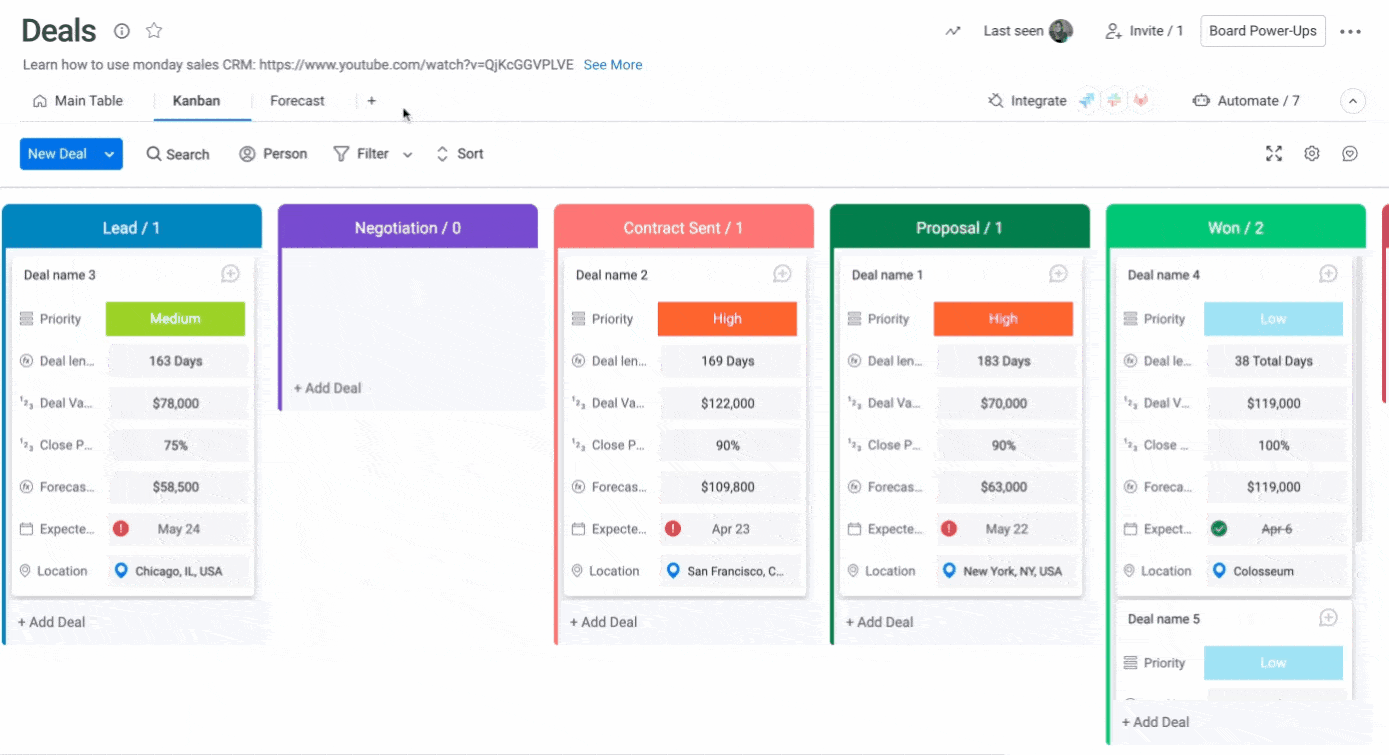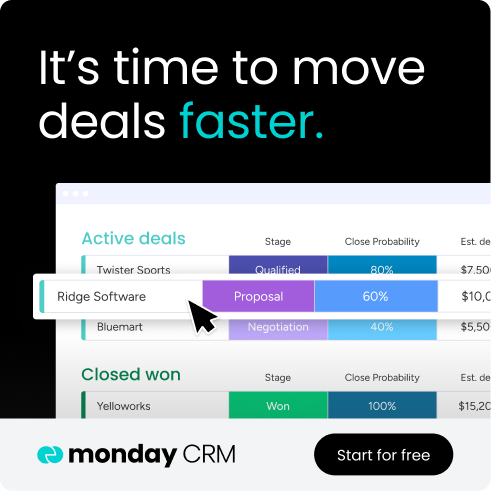Why revenue teams are moving beyond new logos and rethinking how growth actually happens
When it comes to growth, many businesses mistakenly put all their focus on sales rather than on their overall revenue performance.
And while it’s not crazy to think that more new customers obviously means more revenue, this approach has a major flaw: new business is just one part of overall revenue health. Hyperfocusing on a single stage of the process means that many organizations are overlooking other crucial drivers of real, sustainable growth.
The problem isn’t just the sales-centric thinking; it’s the obsession with pipeline, which comes from a way of thinking that was built for a different era. Many teams treat top-of-funnel activity like that alone is growth, even when their overall revenue tells a different story. More pipeline does not equal more progress, especially if you lose the customer after they sign.
That’s because healthy revenue growth isn’t just about a steady flow of pipeline. It also relies on what happens before, during, and after the sale.

What sales-centric growth looks like
It’s kind of a subtle thing.
When businesses focus primarily on sales as the means of tracking and assessing growth, everything may look perfectly fine from the outside. Marketing’s bringing in leads, the sales team is closing deals, and CS is doing what they can to keep customers happy. Each team is meeting their specific quotas, goals, and achievements.
But when you zoom out, you see that somehow, revenue still isn’t growing the way it should. The reason is because every team is working toward their own numbers, not toward actual growth.
For example, when sales reps are celebrated for closing fast and bringing in new customers, it can come at the expense of closing well. So reps end up pushing deals through that probably shouldn’t have made it past discovery. And while the reps hit their quotas, bad-fit customers get signed, promises get made that CS can’t realistically deliver, and customers eventually churn.
Then CS ends up inheriting confused, frustrated customers, who are already looking at competitors. And they’re stuck trying to undo the damage with zero context about how the deal was sold or what was promised.
Meanwhile, marketing’s just trying to feed the funnel. They’re focused on quantity (site visits, engagements, leads) because that’s what they’re measured on. It doesn’t really matter if their audience is relevant or likely to close. If volume is up, they’re doing their job well.
But this type of growth is not sustainable. It may work for a few months or maybe even a few years, but eventually it starts breaking down.
5 ways a sales-centric focus eventually hurts revenue
When growth strategy is built around sales performance alone, it leads to patterns that slowly undermine long-term revenue health. This can be seen in some of the most common issues for sales-centric businesses:
- There’s a lot of churn.
Customers who weren’t the right fit in the first place are more likely to leave before they’ve seen real value. The effort spent acquiring them is largely wasted, and retention teams are left spending significant time and resources into salvaging relationships that never had a solid foundation. - Expansion is minimal.
When your effort is spent trying to provide solutions for customers who were never a good fit to begin with, it’s hard to focus on growing accounts. That is especially true when these accounts were never set up for success from the start. When onboarding is rocky and expectations aren’t aligned, the opportunity for upsell or cross-sell disappears and teams miss out on the most efficient source of revenue growth. - Forecasts are inaccurate.
Without visibility into what happens after the sale, projections stray far from reality. Pipeline may look strong, but if those deals aren’t really a good fit, they won’t retain or expand, which means revenue targets slip. - Everyone blames each other.
When every team is meeting their quotas and there’s no one team that’s clearly to blame, it’s not long before things start to get ugly. Sales blames marketing for weak leads (which is true). CS blames sales for overpromising (which is also true). Sales blames CS for high churn rates (true again). Everyone is measured against different goals, and no one has the full picture. - Your brand takes a hit.
And all this hurts your brand. When a customer has a disjointed, frustrating post-sale experience, it’s not just a CS problem. It’s a reputation problem. You don’t get referrals. You don’t build trust. You just cycle through more leads and hope the next one sticks. And these issues don’t always show up on a dashboard, but they’ll show up in missed opportunities, rising acquisition costs, and internal friction that slows everything down.
So what looks like growth in the short term turns into churn, inefficiency, and stagnation. Instead of building a strong revenue engine, the business ends up constantly making up for a bad revenue process.
Many sales tools are built to reinforce this problem
Even when teams want to operate differently, most can’t because the systems they rely on were never designed for an organization focusing on their overall revenue performance.
CRMs, marketing platforms, and support tools are built for their team’s specific functions — whether it’s to track deals, manage campaigns, or log tickets. Each team is working from a different system, leading customer data to get scattered across tools with flawed integration or shared visibility.
Most CRMs, for example, weren’t built for how revenue should actually be managed today. So they become systems of record instead of systems of action. They reinforce a sales-first approach, even when companies are trying to think more holistically.
Our recent survey of sales leaders found that they feel this friction every day. 43% say that limited visibility and access to shared customer data across departments is a key cause of silos in their revenue org, while 39% cite “lack of integration between CRM and other tools” as the reason for silos.
Silos are not a minor issue and are a direct result of using tools that weren’t built for shared ownership.
And these pains are causing sales leaders to rethink their CRMs overall, with 81% saying they are considering replacing their CRM within the year and nearly half (44%) believe the CRM’s costs outweigh their benefits.
Try monday CRMWhat a better approach looks like
This means that fixing the problem starts with redefining how revenue is actually managed across your customer journey.
In order to build sustainable revenue growth, success can’t be seen as just a sales target. Instead, it needs to be a shared outcome for the entire revenue team.
Teams can’t just hand off leads or accounts, they each need to operate from the same data, with aligned goals, shared context, and visibility into what’s happening every step of the customer journey. Getting everyone on the same page means that marketing knows which campaigns lead to high-value, long-term customers, sales understands what success looks like post-sale, and customer success teams are involved early, not just brought in after the deal closes. Then leadership can see one picture instead of five separate reports.
The model shifts from a sort of relay race, where each team passes the baton, to a connected system where everyone is part of driving revenue forward. Because growth isn’t a clean handoff between departments. It’s usually a messy, iterative, and relationship-driven process that includes your entire team.
5 ways a connected revenue approach drives long-term growth
Ok, but how does focusing on revenue over sales actually impact the business? Here’s how:
- Retention improves.
When the focus is on revenue, the entire team is forced to work together to determine who the product is really for. This leads to marketing targeting better leads, sales bringing in customers who are a better fit, and CS getting involved early to ensure customers see value fast. This way, customers get what they were promised and stick around longer. - Accounts grow more naturally.
Once your revenue system is flowing properly, expansion stops being something you eventually think about, but becomes built into how the account is managed from day one. With clean handoffs and shared context, upsell and cross-sell opportunities are easier to spot and quicker to act on. - Forecasts become more reliable.
Likewise, when data flows across the full customer journey, leaders can base forecasts on real patterns, not assumptions. They can see not just what’s likely to close, but what’s likely to stick, expand, and drive long-term value. This way the numbers stop being guesses based on pipeline velocity, and start becoming a system you can actually plan around. - Collaboration replaces blame.
Instead of each team protecting its lane, everyone’s working toward the same goals using the same information. That means marketing starts to see what types of customers turn into long-term revenue, while sales can learn which types of customers churn. CS can then track the entire journey and provide customers with what they’ve been promised. That clarity builds trust and breaks the cycle of finger-pointing. - Customer experience becomes a strength.
From first touch to long-term partnership, the experience feels consistent because the teams behind it are connected. That’s what leads to stronger retention, more referrals, and a reputation that compounds over time.
This isn’t just a better way to work, it’s a better way to grow. Instead of refilling a leaky bucket, companies that operate this way build a revenue engine that gets stronger with every customer they serve well. Because growth is built on infrastructure instead of output.
Choosing revenue-focused growth tools
Making the shift from sales-centric to revenue-focused growth doesn’t just require a new mindset, it requires the right tools to support it.
This shift isn’t just about tactics, it’s cultural. When everyone sees revenue as a shared outcome, systems need to support that. Not just by tracking progress, but by enabling shared decisions, shared insights, and shared momentum.
That’s why many successful teams are using CRMs like monday CRM, which is designed to help manage the customer journey from start to finish. This means everyone is working from the same environment, leading to better visibility, flexible workflows, and a full view of the customer journey.
So instead of working in silos, revenue teams can operate from the same place, with the same context, toward the same goals. Which makes focusing on your revenue to ensure growth THAT much easier.
Try monday CRM Get started
Get started 



